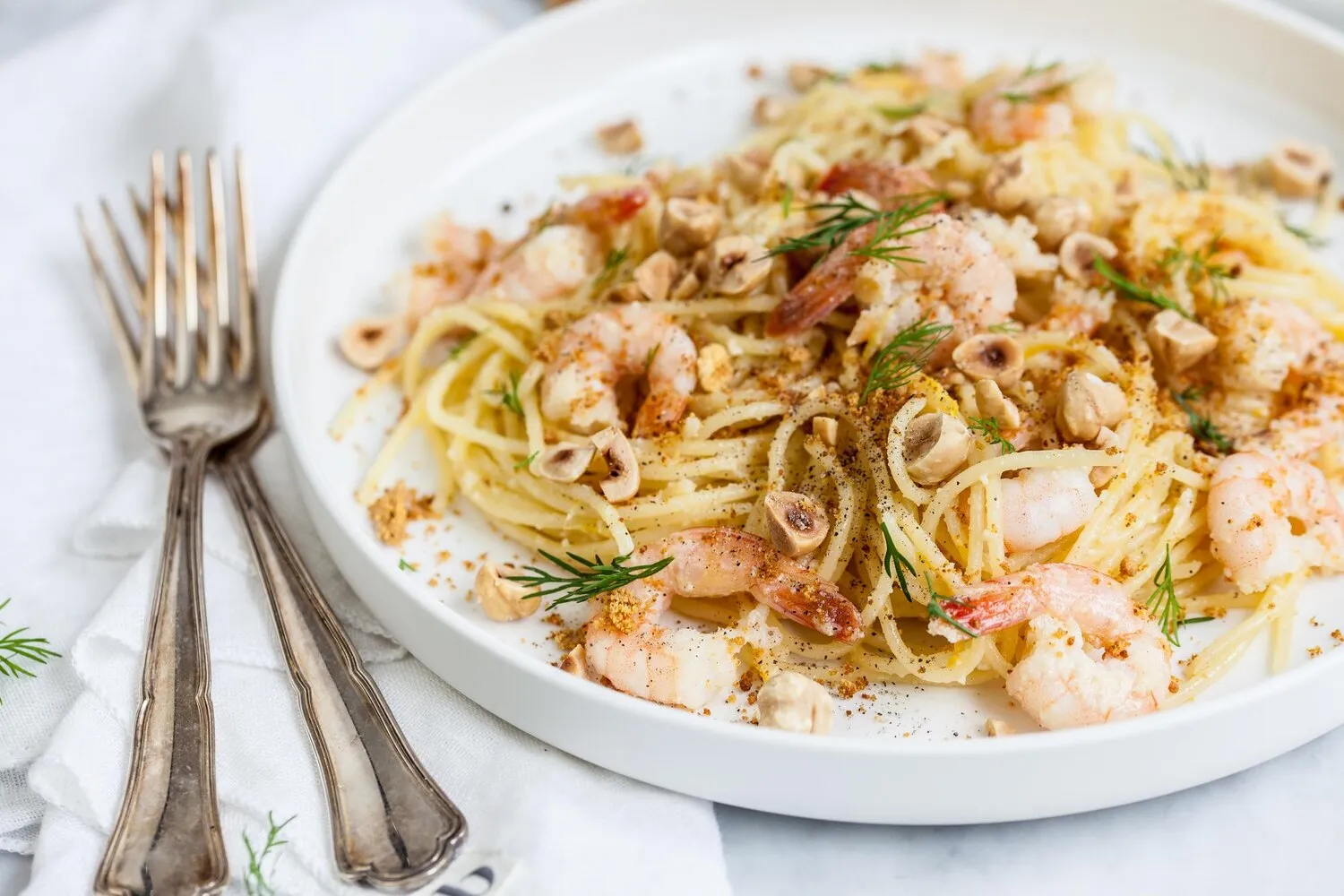
Pasta with Seafood
Pasta dish which contains seafood.
Nutrition Facts
* The % Daily Value (DV) tells you how much a nutrient in a serving of food contributes to a daily diet. 2,000 calories a day is used for general nutrition advice.
Portfolio Restaurant
Pasta with seafood reflects Italy's extensive coastline and maritime history. The dish likely evolved gradually, as coastal communities incorporated readily available seafood into their pasta recipes. Different regions developed unique variations based on local catches and culinary traditions. Influences include centuries of fishing practices and trade routes along the Italian peninsula.
Pasta with seafood is deeply embedded in Italian coastal culture, reflecting the importance of fishing and the sea in regional identity.
Family Gatherings
Seafood pasta dishes are often prepared for special occasions and family gatherings, particularly in coastal regions. Sharing a large plate of spaghetti alle vongole or seafood risotto is a communal and celebratory experience.
Regional Variations
Different regions of Italy boast unique seafood pasta recipes. For example, Spaghetti alle Vongole (with clams) is popular in Naples, while Liguria is known for its pesto-based seafood pasta dishes.
Freshness and Seasonality
The dish emphasizes the importance of fresh, seasonal ingredients. Italians prioritize using the freshest seafood available, often sourcing it directly from local fishermen or markets.
The flavors of pasta with seafood are defined by the fresh, briny taste of the sea, balanced with the savory character of pasta and aromatic herbs.
Key flavors include the sweetness of shrimp, the delicate taste of scallops, the saltiness of clams or mussels, and the richness of calamari or lobster (depending on the specific variation). Garlic, olive oil, white wine, parsley, and chili flakes are common additions that enhance the seafood's natural flavors. Tomato sauce can also be used, adding sweetness and acidity to the dish. The pasta itself provides a starchy base that complements the seafood.
Seafood Quality
Use the freshest seafood possible. Smell the seafood; it should have a clean, ocean-like scent and not be fishy. Purchase from reputable sources.
Pasta Cooking
Cook the pasta al dente – firm to the bite. Undercooking the pasta slightly allows it to finish cooking in the sauce, absorbing the flavors.
Sauce Emulsification
Reserve some pasta water before draining. The starchy water helps emulsify the sauce, creating a creamy and cohesive texture. Add it gradually to achieve the desired consistency.
Avoid Overcooking Seafood
Seafood cooks quickly. Overcooking can make it rubbery and tough. Add the seafood to the sauce towards the end of the cooking process and cook until just opaque and tender.
Explore additional Italian dishes and restaurants
Explore ItalianDiscover top dining spots and culinary experiences in Den Haag.
Explore Den HaagLearn more about the food culture, restaurant scene, and culinary heritage of Netherlands.
Explore Netherlands
